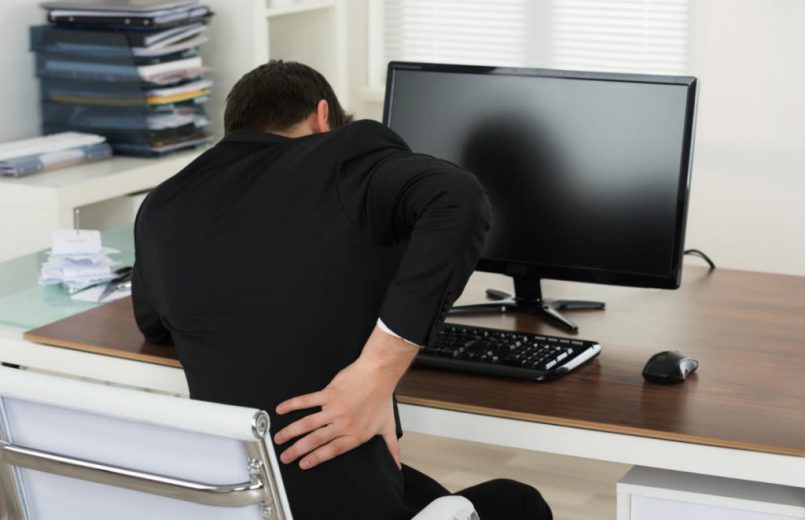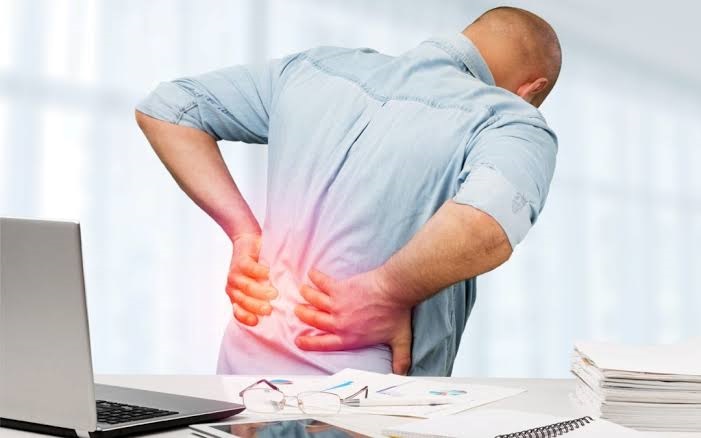Have you ever had back pain? According to WHO (World Health Organization) data, 8 out of 10 people will experience this pain at least once in their lifetime. Low back pain is the second most common pain in the world, second only to the headache.
Low back pain – also called lumbago, lower back pain or simply back pain – is the pain in the lower, lower back, near the pelvis, and may extend to the buttocks and back (back) of the back. thighs. When left untreated, it can be very detrimental to one’s quality of life.
Why do I have back pain?
Fortunately, most people experience back pain because of posture rather than more serious factors. These are erroneous, continuous habits that affect posture, such as working all day bent over the computer keyboard, incorrect sleeping, sitting, driving, and so on.
Low back pain of muscular origin can also arise from sudden movements, twisting, distension of the muscles or ligaments of the back and sedentary lifestyle, due to lack of exercise.
Common causes also include orthopedic and rheumatic diseases (such as herniated disc and sciatic nerve problems), aging, intervertebral disc infection, etc. In addition, psychological factors such as exhaustion, tension, and stress, so common in modern times, can also exacerbate back pain considerably.
Fortunately, low back pain is hardly the result of serious diseases such as cancer, degenerative diseases of the intervertebral discs, among others.
What are the most common symptoms of low back pain?
The main symptom of low back pain is a non-stop pain located in the lower back. The pain can range from simple discomfort to severe and disabling pain. Tingling and numbness can also be observed, as well as cases where the person feels a strong muscle contraction, which makes it impossible even to perform common movements, such as walking, driving, sitting, etc.
Is there a way to prevent low back pain?
Yes, there is. The physiotherapist in Dwarka, highlights “it is important to promote lifestyle change, through the implementation of a specific exercise program and posture care. These exercises are called isometric strengthening and should be practiced to develop the muscles of the entire lower back and abdomen, which form a belt of muscles called the “lumbar stabilizer muscles” that support and protect the spine.
Physiotherapy doctor in Dwarka warns, however, that “muscle-building exercises need to be done correctly so as not to cause injury and further worsen the condition.” It is therefore imperative that the practice takes place under the guidance of a physical therapist or practitioner. of physical education.
Are there differences between low back pain?
Yes. There are different ways to classify low back pain. The first way is regarding the duration of pain:
Acute Low Back Pain – When pain duration is less than 6 weeks
Subacute Low Back Pain – When pain duration is between 6 and 12 weeks
Chronic low back pain – When pain duration is 3 months or more
Low back pain is also classified according to its origin:
Does not specify – It represents 90% of all patients with low back pain. It has no clear cause. Its diagnosis is made by exclusion after other pathologies have been ruled out.
Specific – Caused by some pathology, such as herniated disc with nerve root involvement, inflammatory disorders, infections, osteoporosis, rheumatoid arthritis, fractures or tumors.
8 Tips to Avoid Back Pain in Everyday Life
1. Control your weight
Try to stay within your ideal weight. Obesity greatly damages the spine.
2. Do physical exercises
Do physical activities at least 3 times a week for 30 minutes.
3. Don’t carry too much weight
Avoid carrying too much weight or overweight. If you need to lift some weight, bend your knees and try to keep your spine upright.
4. Search for the best sleeping position
Try to sleep on your side with a pillow between your legs, or on your back with a pillow under your knees. Avoid sleeping on your stomach.
5. Careful when lifting
Get out of bed always on your side. Support yourself and take your time. Avoid getting forward too sharply.
6. Sit down correctly
If you spend many hours sitting, use an armchair that does not recline. Your feet should be flat against the floor.
7. Screen at eye level
If you work with a computer (or spend hours on your smartphone), remember that the screen should be at eye level
8. Observe your posture also while driving
Maintain good posture and try to place support or cushion behind your lower back – especially if you spend a lot of time in traffic.
What is the recommended treatment for low back pain?
It is essential to seek the opinion of an orthopedist or physiotherapist in Dwarka to get the correct diagnosis and the best treatment for low back pain.
There are several possible treatments, including the use of pain relief drugs, muscle relaxants, acupuncture, infiltration sessions, a multidisciplinary rehabilitation program, supervised physical activities, etc.
Many physical therapists work using RPG (Global Postural Reeducation) techniques, which focus on stretching the muscles responsible for postural change due to shortening, which leads to loss of flexibility.
In addition, the physiotherapist in Janakpuri may also resort to the use of pain-relieving apparatus and stretching, relaxing therapeutic massages for tense muscles, and postural correction through exercise.



